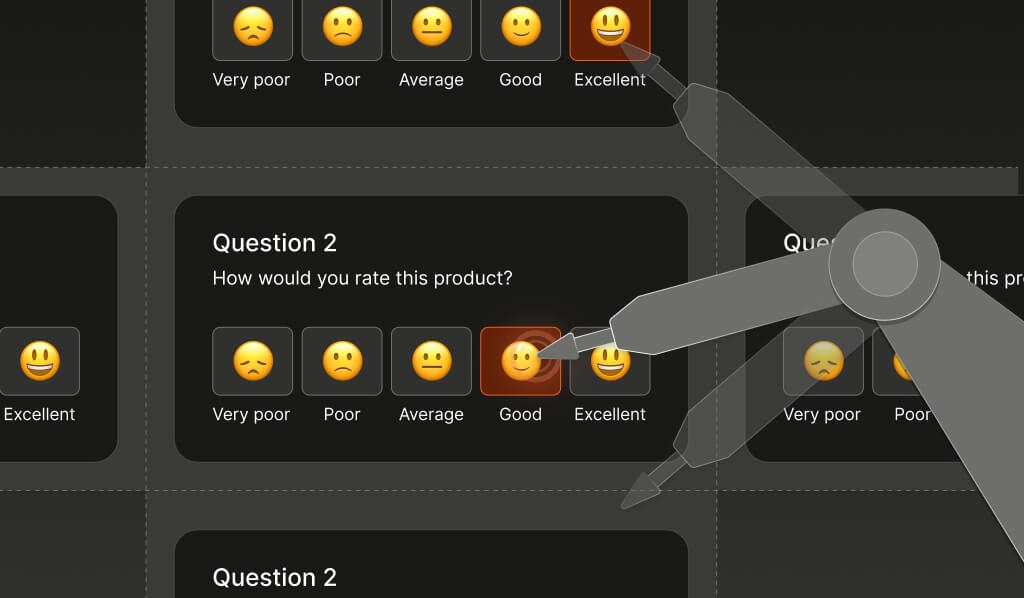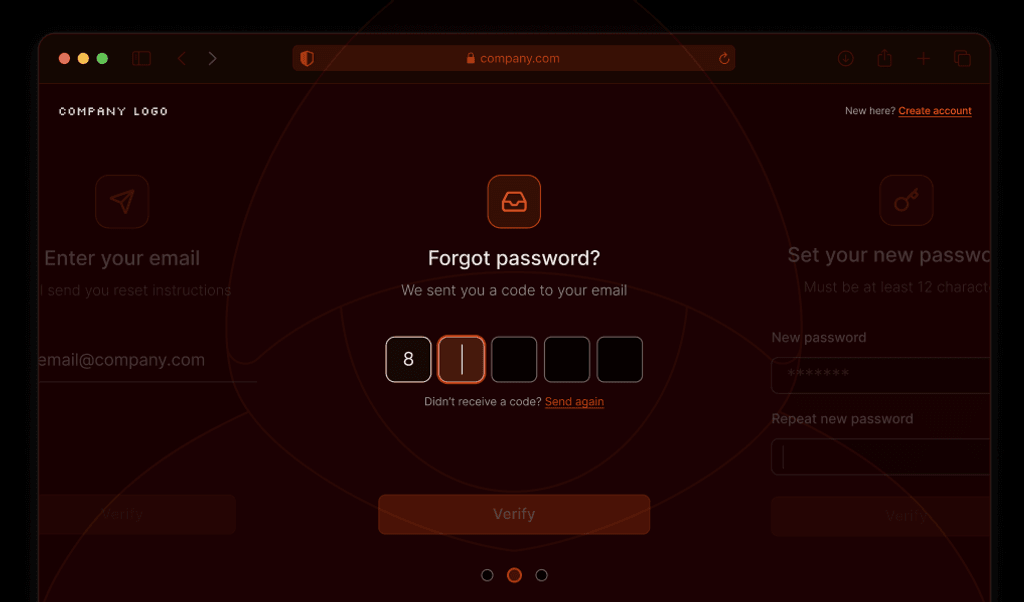
Summarize this article with
If you rely on survey data for marketing, research, or product decisions, ignoring fake responses leaves your business vulnerable to costly mistakes. Automated bots, repeat survey-takers, and organized fraud rings are out there, quietly ruining your data, wasting your budget, and undermining every decision you make based on that compromised information. Let’s break down what survey fraud looks like, why it matters, and how you can actually stop it.
What is survey fraud?
Survey fraud is when someone submits false, misleading, or duplicate responses to a survey. Sometimes it’s about cash rewards, gift cards, or sweepstakes. Other times, it’s bots cranking out fake answers for profit or mischief. Fraudsters use all kinds of tricks: gaming geo-restricted surveys with virtual private networks (VPNs), creating multiple accounts, or running full-blown operations with several devices.
Who gets hit hardest? Market research teams, academic studies, customer feedback programs, and political polling are all favorite targets. Any survey offering incentives or valuable insights is basically a magnet for fraud. The fallout is ugly: bad data leads to bad business calls, wasted marketing spend, and embarrassing research blunders.
Types of survey fraud
Fraudsters have more tricks than a magician. Here are the main ways they mess with your surveys:
Bot-generated responses
Automated bots are the power tools of survey fraud. These programs zip through surveys at inhuman speeds, churning out fake answers that sometimes look almost real. Bot detection is essential because bots can overwhelm your system before you even realize it.
Duplicate or multi-account submissions
Some fraudsters create fleets of fake accounts or use multiple devices to submit the same survey repeatedly. This is especially common when there’s money or prizes at stake. Without solid checks, duplicate responses quietly pile up and poison your results.
Proxy or VPN masking to bypass geo-restrictions
Geo-restricted surveys are irresistible to fraudsters with a VPN or proxy. By masking their real location, they sneak into surveys meant for specific regions or demographics, often to chase higher payouts. VPN detection can help flag these attempts.
Inattentive or random answers
Not all fraud is high-tech. Some participants just click through as fast as possible, giving random or careless answers. Whether they’re bored, distracted, or just want to finish quickly, these responses still wreck your data quality.
Professional survey takers or fraud rings
Yes, organized fraud rings exist. These groups share tools, tactics, and even step-by-step guides for gaming survey systems. They’re skilled at blending in and can be surprisingly hard to catch without advanced detection methods.
Why survey fraud is a serious problem
Skewed data leads to bad decisions
If your survey results are packed with fake or careless responses, every analysis and business move based on that data is suspect. You might launch the wrong product, target the wrong market, or waste months chasing trends that don’t exist.
Budget waste on invalid responses
Every fraudulent response means wasted incentives, platform fees, and analysis time. For big projects, this adds up fast — especially if you only catch the fraud after the fact.
Reputation and trust issues
Publish research based on bad data, and you risk your reputation with customers, stakeholders, and the public. Once your credibility takes a hit, it’s tough to rebuild trust for future studies.
Signs of survey fraud
Spotting survey fraud isn’t always obvious, but there are some classic red flags:
- Unrealistically fast completion times: If someone finishes a 15-minute survey in 90 seconds, survey fraud is likely.
- Identical or patterned responses: Multiple submissions with the same answer patterns, demographics, or suspiciously similar email addresses should raise eyebrows.
- Suspicious IPs or geolocation anomalies: Clusters of responses from the same IP address or from locations that don’t match your target audience are a giveaway.
- Multiple submissions from the same device or browser: Even if cookies are cleared, advanced device intelligence can spot these repeat offenders.
- Use of disposable email addresses: Temporary or throwaway emails are a favorite tool for fraudsters trying to fly under the radar.
How to detect survey fraud
There’s no single magic fix for survey fraud — it’s about layering multiple defenses.
Use device intelligence to detect repeat submissions
Device fingerprinting creates a unique identifier for each device visiting your survey. This lets you spot repeat submissions, even if the fraudster clears cookies. It works by analyzing over 100 device and browser attributes, making it much harder to game than simple IP checks.
Track IP addresses and detect proxy/VPN usage
Monitoring IP addresses reveals clusters of responses from the same source or from known proxy and VPN services. Advanced VPN detection can even spot residential proxies and commercial VPNs, helping you flag suspicious traffic.
Monitor survey completion time and answer patterns
Set reasonable baseline completion times and flag responses that are way too fast (or suspiciously slow). Analyzing answer patterns can also reveal inattentive respondents or coordinated fraud efforts.
Use behavioral analysis and AI-based anomaly detection
Modern fraud detection systems use machine learning to spot unusual behaviors — like erratic mouse movements, inconsistent keystrokes, or odd answer patterns — that don’t match legitimate users. These systems can catch subtle fraud that slips past manual review.
CAPTCHAs and honeypot fields (with limitations)
While CAPTCHAs and hidden honeypot fields can weed out basic bots, don’t expect these alone to stop determined fraudsters or sophisticated bots. They’re fine for basic filtering, but not enough on their own.
Best practices to prevent survey fraud
Prevention beats cleanup every time. Here’s how to make your surveys a tougher target:
- Limit incentives and use randomized delivery. Don’t make your rewards so generous that you attract professional fraudsters. Randomize when and how incentives are delivered to make gaming the system harder.
- Include attention-check questions. Slip in questions that require careful reading or recall. If someone fails these, it’s a strong sign they’re not paying attention (or they’re a bot).
- Restrict access based on geolocation or referral source. Only allow survey access from the regions or audiences you care about. Referral codes can add another layer of control.
- Use fraud detection tools during and after data collection. Don’t wait until the survey closes to check for fraud. Real-time monitoring lets you act fast, while post-collection analysis can catch anything that slips through.
- Verify identity for sensitive surveys. For high-stakes research, consider optional authentication steps. Yes, it might lower your response rate, but the data you collect will be far more trustworthy.
How Fingerprint helps detect survey fraud
Fingerprint is a device intelligence platform built that uses device fingerprinting to assign a persistent visitor ID to every device that accesses your survey. This lets you spot repeat submissions, even if someone clears cookies, switches browsers, or uses incognito mode.
Fingerprint’s also provides 20+ Smart Signals to help you catch fraud in real time, for example:
- Bot Detection: Flags automated browsers and scripts running in the background, making it far more effective than an annoying CAPTCHA.
- Browser VPN Detection: Spots VPN and proxy usage, so you can block or review suspicious traffic.
- Velocity Signals: Detects devices changing certain data points like IP address and country at unusually high rates.
- Browser Tampering Detection: Catches users running anti-detect browsers or altering their browser configuration to avoid identification.
- Incognito Detection: Identifies when someone is trying to hide their activity using private browsing.
Fingerprint works behind the scenes, and real-time alerts mean you can act the moment suspicious activity appears.
Keep your surveys clean and your data trustworthy
Survey fraud is a real threat to your data, your bottom line, and reputation. The risks of ignoring it are too high, and the tools to fight it are better than ever. If you want to see how advanced device intelligence can protect your surveys, you can explore Fingerprint’s free trial below or connect with the team for a demo.
Ready to solve your biggest fraud challenges?
Install our JS agent on your website to uniquely identify the browsers that visit it.



